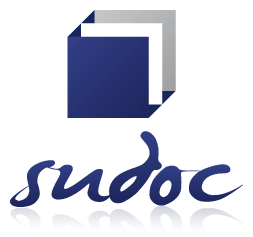Examining the Relationship Between the Language of Art and Architecture in the Process of Understanding Urban Space
DOI:
https://doi.org/10.63053/ijset.104Keywords:
Architecture, Spatial Perception, Urban Environment, Sensory ExperiencesAbstract
This research explores the relationship between the language of art and architecture in the process of understanding space in urban environments. Given the importance of visual aspects and sensory experiences in urban spaces, the role of art and architecture in creating and shaping these experiences has been examined. This paper investigates the role of art in creating aesthetic experiences and emotions in urban spaces, as well as the impact of architecture on the process of spatial perception and experience. The results of this study may help architects, artists, and urban planners identify the best methods for integrating art and architecture in the design and creation of urban spaces to enhance the experience of citizens. Consequently, this research particularly aims to answer how this interdisciplinary approach in architecture can strengthen our understanding of the non-visual aspects of space and stimulate architectural creativity. Thus, integrating artistic elements into architecture, and vice versa, can improve citizens' experiences of urban spaces, making urban life more beautiful and attractive. Therefore, utilizing collaborative tools to create suitable and pleasant urban spaces is of great importance. This interaction between the language of art and architecture can contribute to the creation of dynamic, creative, and unique urban spaces, instilling a sense of beauty and connection with their living environment in citizens.
References
Beiramipour, A., Bakhtiar Nasrabadi, H., & Hashemi, S. H. (2010). Post modernism and modification in curriculum. New Educational Approaches, 5(1), 31-64.
Mousavian. (2022). Recognizing and analyzing theoretical models of environmental psychology with an emphasis on the role of human experience in environmental aesthetics perception. Human and Environment, 20(1), 199-214.
Nazarzadeh, Esmaili, Mohammadi. (2022). Sociological explanation of the social capital impact on social adaptation: A case study of residents in residential complexes in Isfahan city. Applied Sociology, 33(1), 159-188.
Mansouri, Sina. (2020). Explaining the conceptual model of urban identity revitalization with an emphasis on pattern language (case study: District 1 of Tehran). Journal of Urban and Regional Planning, 4 (Issue 10), 147-173.
Bacon, Edmund. (1791). Design of Cities. Translated by Farzaneh Taheri. 3rd edition. Tehran: Shahidi Publications.
Bartoloni, P. (2015). The Space of Language and the Place of Literature. In B. Richardson (Ed.), Spatiality and Symbolic Expression (PP. 129-153). New York: Palgrave Macmillan.
Bottini R, & Doeller CF. (2020) Language experience in cognitive maps and image spaces. Trends Cogn Sci. 24(11), 855-856.
Fazli, Ghasem. (2015). The relationship between understanding and language in the thought of Wittgenstein and Gadamer. Cognitive Epistemology Research, 7, 142-113.
Kraaijeveld, I. J. M. (2013). Theory and practice: being in two minds? Richard Roland Holst as a community artist and the relation between his theories and his practice of stained glass making (Master's thesis).
Duhautpas, F., & Solomos, M. (2014). Hildegard Westerkamp and the Ecology of Sound as Experience. Notes on Beneath the Forest Floor. Soundscape, The Journal of Acoustic Ecology, 13.
Borucka, J. (2015). Sound art and architecture: New horizons for architecture and urbanism. Procedia-Social and Behavioral Sciences, 174, 3903-3908.
Probst, P., Wright, M. N., & Boulesteix, A. L. (2019). Hyperparameters and tuning strategies for random forest. Wiley Interdisciplinary Reviews: data mining and knowledge discovery, 9(3), e1301.
Truax, B. (2019). Acoustic ecology and the world soundscape project. Sound, media, ecology, 21-44.
Truax, B. (2012, April). From soundscape documentation to soundscape composition. In Acoustics 2012.
Adams, M. D., Bruce, N. S., Davies, W. J., Cain, R., Jennings, P., Carlyle, A., ... & Plack, C. (2008). Soundwalking as a methodology for understanding soundscapes.
Truax, B. (1996). Soundscape, acoustic communication and environmental sound composition. Contemporary Music Review, 15(1-2), 49-65.
Reismanchian, Omid, Bell, Simon. (2013). Understanding the practical applications of space arrangement in the perception of urban spatial configuration. Fine Arts-Architecture and Urbanism Journal, 2(43), 49-56.
Downloads
Published
How to Cite
Issue
Section
License
Copyright (c) 2025 Authors

This work is licensed under a Creative Commons Attribution 4.0 International License.












